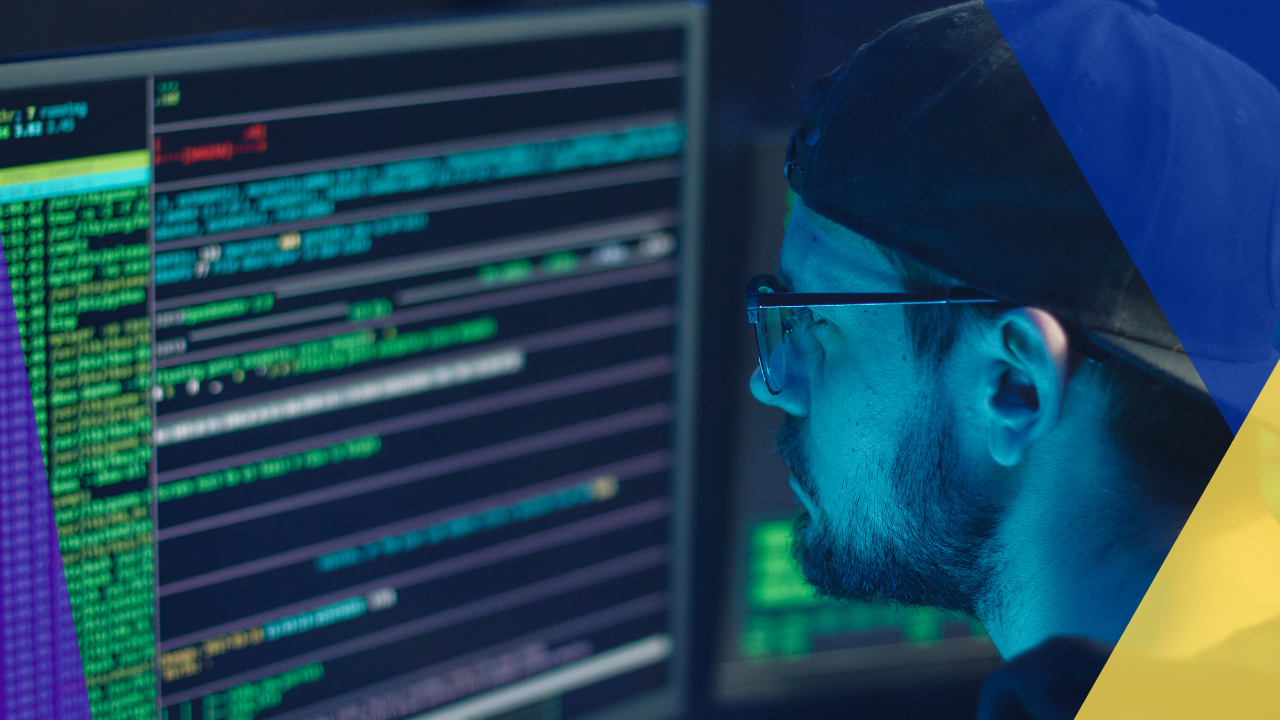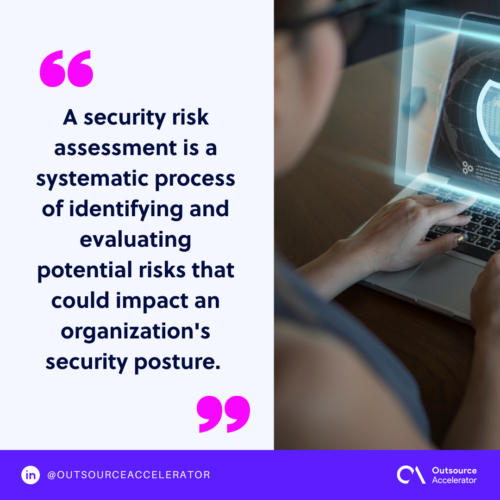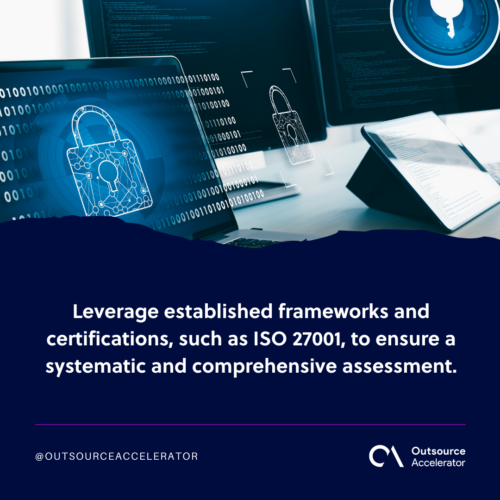Understanding security risk assessment: An essential guide

In today’s digital landscape, organizations face numerous security challenges threatening their sensitive information’s confidentiality, integrity, and availability.
Per a recent IBM Cost of a Data Breach report, 83% of companies focus more on when a data breach occurs. Today, faster response and threat prevention are better than facing them in actuality. This highlights the urgent need for organizations to invest in robust security risk assessment processes.
Security risk assessment may sound daunting at first. However, it is a manageable and essential undertaking for businesses of all sizes and industries.
This article aims to provide a handy guide to understanding security risk assessments, including key components and best practices for conducting them.
Understanding security risk assessment
A security risk assessment is a systematic process of identifying and evaluating potential risks that could impact an organization’s security posture. It involves assessing vulnerabilities, threats, and potential impacts to determine the likelihood and severity of a security incident.
Security risk assessments are usually done as required by compliance standards. Some certifications that require this assessment include:
- PCI DSS certification for online payments
- SOC 2 certification as part of audit for service organizations
- ISO 27001 for information security

Key components of a security risk assessment
A security risk assessment comprises key components showing a holistic view of a company’s security posture.
The following are five crucial components of a security risk assessment:
Asset valuation
The first step involves identifying and valuing the organization’s assets. These assets can be tangible, such as physical infrastructure and data centers, or intangible, such as intellectual property and customer data.
Threat analysis
The next component involves analyzing and identifying threats that can occur in a company. Here, the company lists threats from various sources. This includes cybercriminals, natural disasters, or technological failures.
Firms can develop targeted countermeasures by assessing each threat’s likelihood and potential impact.
Vulnerability assessment
A vulnerability assessment aims to identify weaknesses in an organization’s security controls. It tests the effectiveness of existing safeguards placed by the company.
This component evaluates a company’s cyber defense tools and techniques. This includes firewall, antivirus software, access controls, and employee training.
Identifying vulnerabilities enables organizations to strengthen their security measures and reduce the risk of exploitation.
Risk evaluation
Analyzing and evaluating the risks involved is crucial once the threats and vulnerabilities are identified.
Risk evaluation comprises assessing the likelihood of a threat and its potential impact. Conducting risk evaluations can help firms prioritize mitigation efforts effectively.
Risk mitigation and management
The final component of a security risk assessment involves developing risk mitigation strategies and practices. This involves implementing additional protocols like encryption, intrusion detection systems, and disaster recovery plans.
Companies can minimize the likelihood and impact of security incidents through proper risk mitigation.
Security risk assessment process
A security risk assessment involves a well-defined process to ensure comprehensive coverage. Depending on the company’s practice, a risk management team headed by a security assessor will be formed to conduct the entire process.
This typically includes the following steps:
Planning and preparation
Security risk assessments start with planning the assessment’s scope, objectives, and methodology. This covers which assets, systems, or processes will be assessed and establishes its criteria.
Data collection and analysis
In this phase, an assigned risk management team will then collect relevant data about related threats and vulnerabilities and the existing security controls. This data serves as the foundation for analysis and evaluation.
Risk assessment
The team will use the collected data to assess the risks based on their likelihood and potential impact. This helps prioritize risks and determine the appropriate risk mitigation measures.
Control implementation
After identifying and prioritizing risks, the team develops and implements risk mitigation strategies.
This may involve implementing technical controls, updating policies and procedures, or providing additional employee training.
Monitoring and review
Once in place, the team will continuously monitor and review the implemented measures’ effectiveness.
The team will conduct regular security audits, vulnerability scans, and incident response exercises to ensure the strength of their measures.
Best practices for effective security risk assessment
Security risk assessments can be done effectively and with compliance once done properly.
Here are the best practices to consider for an additional cyber security layer:
- Involve key stakeholders from various departments to comprehensively understand the organization’s security needs and objectives.
- Conduct regular cyber security assessments to stay ahead of emerging threats.
- Stay up-to-date with the latest security trends, vulnerabilities, and best practices to enhance the effectiveness of risk assessments.
- Leverage established frameworks and certifications, such as ISO 27001, to ensure a systematic and comprehensive assessment.
- Engaging external security professionals can provide an unbiased perspective and ensure a thorough assessment.

Security risk assessments are crucial to identify and prevent potential threats proactively.
Organizations can enhance their security posture and protect their valuable assets by understanding the key components of a security risk assessment and following best practices.
Regularly review and update assessments to adapt to the ever-changing threat landscape.







 Independent
Independent




